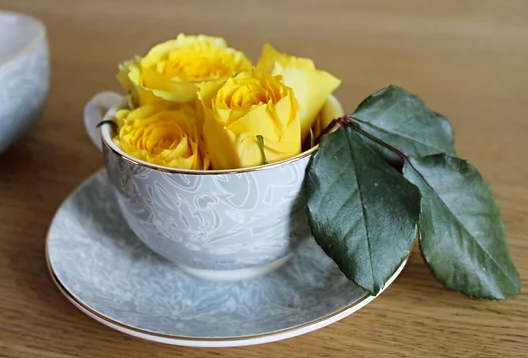Is Tea a British Custom or a World Wide Phenomenon?
Tea, it’s a word that is used in every culture, a custom that brings warmth and generosity, but each culture has a different variation. We are known, as British, to be the tea drinkers of the world. With our afternoon teas, tea breaks and just that everyday cuppa that we can’t live without. However, have you ever thought that this custom isn’t just British, but in fact a world phenomenon?
Tea, to everyone is a way of bringing people together, to connect and to have that time to be in the moment. It’s a custom that seems to be used throughout the world, however, every culture has a different twist on it.
Drinking a cup of tea is a ceremonious thing, where the heat gives you a warm feeling inside, that feeling of a hug. Tea can both stimulate and relax the body, with an oxidization that allows more oxygen into your body, giving you that calm feeling.

Japanese Tea ceremony is similar to China’s ceremonious stages. It is heavily influenced by Zen Buddhism, the elaborate traditional Japanese chanoyu tea ceremony, which involves ritualized preparation, presentation, and consumption of tea. Matcha powder, made of ground green tea leaves, is used to brew a frothy, ethereal tea.
In Thailand, perhaps the most famous brew is the delicious Thai iced tea or cha-yen. This is made from a strong black Ceylon tea and is blended with condensed milk and sugar before being served over ice. Various flavours or spices are added, which can include orange blossom, cinnamon, star anise, liquorice, and ground tamarind. This is used to cool and give energy whilst working in rice fields.
We all know the British empire was built alongside the East India Company, importing large amounts of black tea to the west. Indian culture is largely influenced by the British and their habits. I found that Indians were readily proud to tell me that they could make a decent cuppa, ‘with milk’. However, with the wonderful spices and richness of India, they have added their own take, adding spices like cardamon, fennel, cinnamon and cloves, to create the beautiful hot drink. This in fact, became a hot trend a 5 or so years back the ‘chai tea’.
We go further west, into the middle east, to where Arabic tea is a custom. Arabic tea (also called coffee) is a black tea with cardamon, which is quite an acquired taste. This is served in a small espresso style cup and constantly poured from an Arabic tea pot, which is a beautiful metal pot, with an Arabic hourglass figure and spout and served with dates. This tea is taken on picnics in the desert, where families bring their majilis (floor seating) coffee and snacks. Tea is also given as a welcome gesture in a social environment.
Japanese Tea ceremony is similar to China’s ceremonious stages. It is heavily influenced by Zen Buddhism, the elaborate traditional Japanese chanoyu tea ceremony, which involves ritualized preparation, presentation, and consumption of tea. Matcha powder, made of ground green tea leaves, is used to brew a frothy, ethereal tea.
In Thailand, perhaps the most famous brew is the delicious Thai iced tea or cha-yen. This is made from a strong black Ceylon tea and is blended with condensed milk and sugar before being served over ice. Various flavours or spices are added, which can include orange blossom, cinnamon, star anise, liquorice, and ground tamarind. This is used to cool and give energy whilst working in rice fields.
We all know the British empire was built alongside the East India Company, importing large amounts of black tea to the west. Indian culture is largely influenced by the British and their habits. I found that Indians were readily proud to tell me that they could make a decent cuppa, ‘with milk’. However, with the wonderful spices and richness of India, they have added their own take, adding spices like cardamon, fennel, cinnamon and cloves, to create the beautiful hot drink. This in fact, became a hot trend a 5 or so years back the ‘chai tea’.
We go further west, into the middle east, to where Arabic tea is a custom. Arabic tea (also called coffee) is a black tea with cardamon, which is quite an acquired taste. This is served in a small espresso style cup and constantly poured from an Arabic tea pot, which is a beautiful metal pot, with an Arabic hourglass figure and spout and served with dates. This tea is taken on picnics in the desert, where families bring their majilis (floor seating) coffee and snacks. Tea is also given as a welcome gesture in a social environment.

Moroccan mint tea has a certain technique in the way it is served. Tea is poured at a height, given it an element of entertainment and allows the flavour to come alive. Tea is served in small glasses and with an accompaniment of nuts and sweets. Sitting in Marrakesh in the market square, drinking Moroccan mint tea and watching the world go by is an absolute must!
Turkish tea, also known as ‘rize tea’, is a black tea with no milk. The Turks created their own strength in tea and is offered as a sign of friendship and hospitality, anywhere and anytime, before or after any meal. Turks started growing their own tea in the mid-20th century. It is full-flavored and too strong to be served in large cups, therefor it’s always offered in small tulip-shaped glasses, which you have to hold by the rim to save your fingertips from burning because it’s served boiling hot. Basically, like a miniature hug. Serious tea-drinkers usually go to a coffee & tea house, which is served in a samovar (highly decorated teapot), enabling them to refill their glasses as desired. Interestingly the Russian culture of tea is very similar to this, which was popularised by Catherine the Great and introduced to the Russian culture through the Silk road, that bought trade between the east and west.
Then we finish off with the British afternoon tea. This once was a rich tradition, where the elite would meet for afternoon tea, alongside rich chocolates, cakes and sandwiches. It is still now a tradition of meeting and celebration, sometimes now with a glass or two of bubbly. However, the initial ritual of afternoon tea, we continue this daily in our homes and in tearooms, the kettle goes on once a visitor arrives and making a cuppa is a gesture of hospitality and giving.
All over the world, we drink tea in a different way, however one thing remains the same. It is a moment of calm, time to share and live in the moment. No matter our culture and our language, the one thing that brings the whole world together is the act of tea. So why not give a gift of a calm moment? With Milly Sands we believe that tea is loved throughout the world and we try to bring that into our products. We want to give you the gift of that happy and peaceful moment, with family, friends or a moment to yourself.

